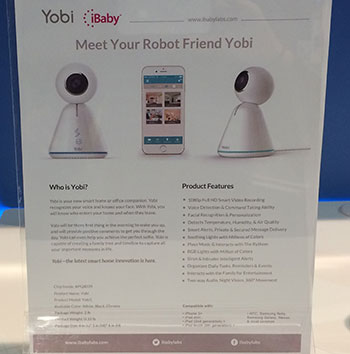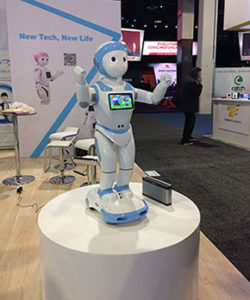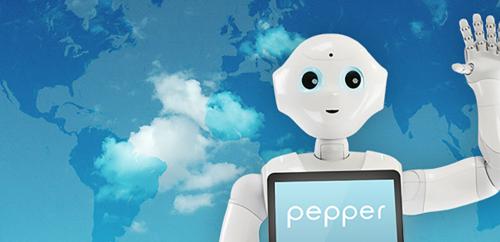Robots might always seem to be a concept that’s way off in the future, or conveyed to us as thrilling ideas we see in the big blockbuster movies, but in 2017, many already exist in our smart homes. Amazon’s ALEXA, and Google Home, which are essentially voice-operated assistants, are early forms of robots, awaiting commands that range from playing specific music, preparing the coffee pot, or finding out the score of the big game. Many of these commands are things we already perform on our own mobile devices. But at CES last week, where the robotics marketplace premiered some of the most advanced and high-tech robots in the world, robots made it very clear that they offer something we can’t quite get from our iPhones, tablets, or voice assistants, and that they are indeed the next step in the evolution of the Internet of Things. In fact, Steve Cousins, a speaker at CES on CNET’s “Robots: Are They Ready to Help” panel, and CEO of Savioke, an autonomous robotics technology company, predicted that twice as many people will interact with robots in 2017 than they did in 2016.



Steve Carlin, vice president of SoftBank Robotics America, said during the panel, “Robotics takes that wall between you and your environment, that cell phone, and gets rid of it.” Carlin explained the progression we’ve seen in technology over the last couple of decades as having gone from desktop to laptop to mobile, and now we see robotics entering the fray as well. “That’s spurred by one of the key consumer trends: The ability to talk to your devices,” he said. We’ve seen it in Siri, as well as the voice search on X1, and it will only become more of a dominant feature in our daily lives as technology catches up to what consumers seek the most: meaningful interactions and conversation. As many of the robots that roamed the showfloor at CES exhibited, people can cut right to the chase and just get to what they want without pulling out their own mobile devices and starting a search of their own — whether it’s a daily chore they want done, locking up the garage door, or checking what the weather will be later that day.
“[Robotics] takes an inanimate object, which is passive, and turns it into a two-way proactive interaction,” elaborated Carlin. Carlin oversees the development of a line of a humanoid robot, called Pepper, designed primarily for commercial businesses but whose abilities to interact with humans could very well one day lead to its place in the home. Right now, the robot is used primarily in SoftBank Mobile stores in Japan where it welcomes customers and answers questions. The goal is for Pepper to help customers in various consumer markets, whether it’s in a store, a car dealership, hotel, or a hospital. Pepper was made to recognize emotions in people and to adapt its behavior accordingly, using gestures and gesticulations.
Harry Kloor, an esteemed scientist in robotics, also spoke on the panel and believes that humanoid robots like Pepper will rapidly develop in the next few years. “It has arms, a face, it’s seeing you. It’s what we as a society want to see, we want to have what we call presence,” said Kloor. The evolution we’ve seen in technology suddenly taking on human-like qualities also has to do with the idea that our world is very unpredictable, added Terry Fong, a director and senior scientist at NASA. Robots can be programmed to better handle this uncertainty through intimate interactions with people. “They’re not made to be something you just turn on or off,” said Fong, like we treat many of the connected-devices we have in the home now. And aside from the idea that robots can make our work and personal lives much more efficient, just as our mobile and home connected-devices have helped us search for answers to just about anything, and to complete daily tasks at a greater speed than ever before, the bigger concept here is that robotics will bring that human touch to help lessen the strain of certain situations or tasks. For example, before an MRI procedure, which can be a stressful experience, Pepper can better explain the procedure to a patient and answer questions than a search on your phone would, or that ALEXA could, simply because of the robot’s presence and ability to detect emotions.
We won’t see fellow Peppers populating our homes quite yet. But look for this trend in our connected devices to continue throughout the year, as innovators in the technology and internet spaces work together to eliminate some of the barriers we experience with technology today — and to bring consumers the greater engagement and personal back and forth conversations they seek with their devices as they go about their daily lives.
This blog also appeared in CTAM Smartbrief. To sign up, click here.
